Much of the time, par fives are polarizing golf holes. Some players step on the tee with confidence, expecting to be on the green in regulation, often with a makeable putt. Others tee it up feeling as if they’re miles away from the flag.
Not unlike layouts with back-to-back par threes, courses that feature consecutive par fives either offer golfers a chance to keep the good momentum going or to make up for a recently missed opportunity.
Here, we spotlight 10 courses with back-to-back holes that score a perfect 10—at least in terms of par.
Dye’s Valley at TPC Sawgrass—Ponte Vedra Beach, Fla.
When players arrive at the 16th hole at Dye’s Valley, they’ll encounter the longest hole on the course, one punctuated by a sprawling lagoon that runs much of the length of the hole on the left and mounding running down the right. However, given that these topographical challenges make appearances regularly around the Pete Dye- and Bobby Weed-designed layout, those players will be well prepared. That doesn’t mean they won’t be uneasy as they prepare to hit their tee shots. “It’s visually intimidating from the tee box,” says Montrelle Wells, a longtime caddie at TPC Sawgrass. “The fairway looks really narrow and anything left looks dead.” Unfortunately, the hole doesn’t get any easier away from the tee. A tight shot is required if players want to go for the green in two, since water guards the entire left and rear of the green, but a greenside bunker on the right further complicates the issue.
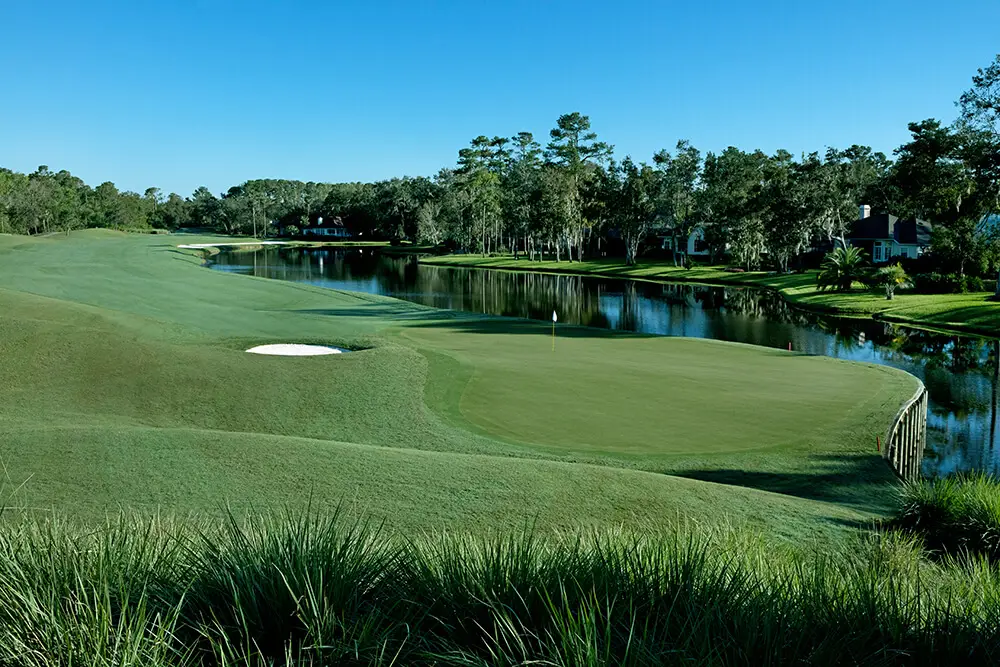
The reward for making it through the 16th hole is another par five with the same lagoon on the left. Fortunately, the fairway is wider, there’s more rough between the short grass and water on that side, and the hole is 40 to 60 yards shorter—depending on the tees being played. Oh, and the green complex is only guarded by a bunker on the left. Yes, water can be seen, but fortunately, it’s not in play.
Fields Ranch (West), PGA Frisco—Frisco, Texas
The penultimate hole on the West course at Fields Ranch—the latest Omni Resort just north of Dallas that shares a home with the PGA of America—plays due east and often into the wind, which makes tee shots over Panther Creek and the surrounding wetlands a hold-your-breath moment. Once you find the short grass, you’ll have the option of laying up short of a wide fairway bunker that juts out into the landing area on the right or hitting farther to the left with a longer club and utilizing the sloping hillside to potentially carom your ball onto the partially concealed putting surface. Either way, birdie chances are obtainable.
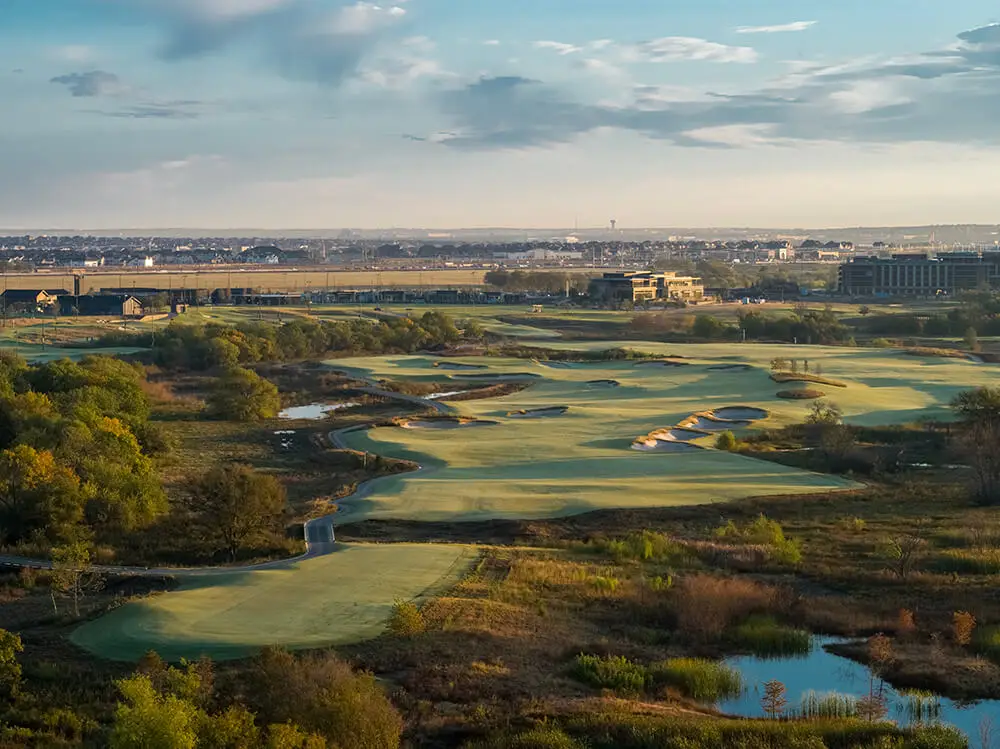
The final hole on the West course introduces just as many choices. Six fairway bunkers (four on the right, two on the left) require players to thread the needle off the tee. Once in the fairway, it’s all about positioning, as four fairway bunkers strategically placed between 60 and 115 yards from the green dictate where and how golfers must layup. That said, well-hit drives can bring the putting surface within reach on second shots, and a wide bailout area to the left makes it possible to recover without sacrificing a putt for birdie.
Baltusrol (Lower)—Springfield, N.J.
On the scorecard—and from the tee box—the 17th hole on Baltusrol’s Lower course looks like your typical long (emphasis on long) par five, one that plays as much as 655 yards from the backmost tees. But getting home in three is a victory in itself on this hole, since any drive that finds the rough will leave a second shot that almost certainly brings the Sahara—an expansive cross-fairway bunker—into play. The final 80 yards of the hole are also comprised of a bunker-strewn hillside that protects a small putting surface, only 34 yards deep. Needless to say, par here feels like a birdie.
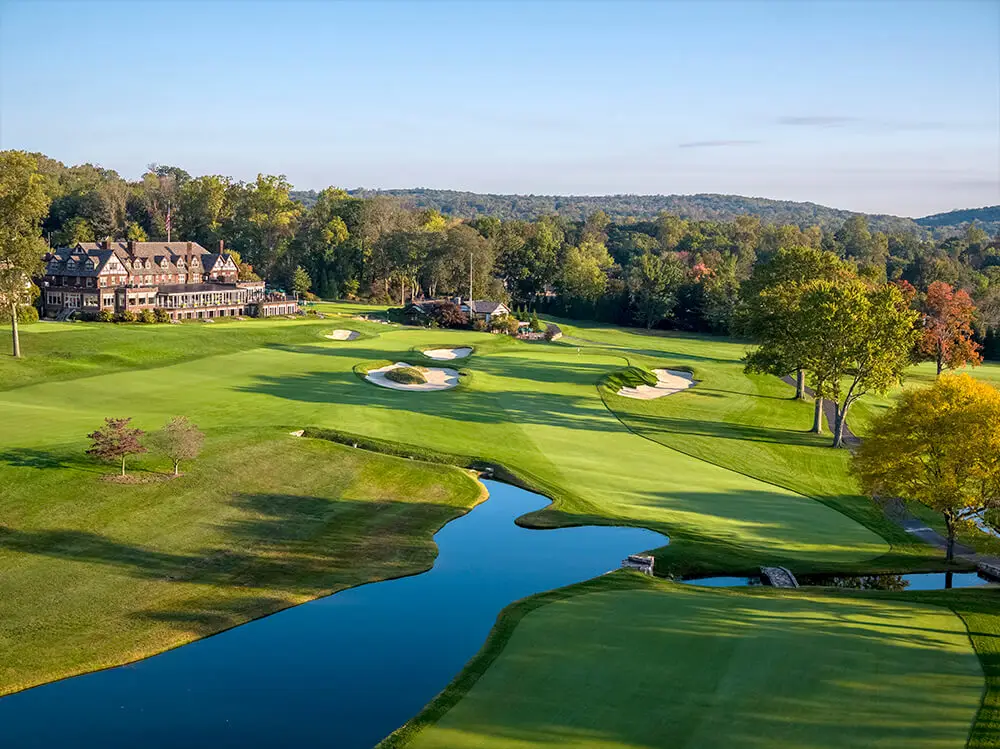
Things don’t get much easier on the 18th, a par five devoid of fairway bunkers (can I get a hallelujah?) but one that introduces a lagoon on the left and a creek that bisects the fairway. Getting home in two is a tall order, as the entire second half of the hole plays uphill to a well-guarded green. That said, your odds of finishing with a par are much better than they are on the 17th, while makeable birdie opportunities aren’t out of the question either. Interestingly, if you happen to start your round on the back side you’ll be faced with three consecutive par fives upon making the turn to the friendlier, 485-yard par-five 1st hole.
Cabot Cliffs—Inverness, Nova Scotia, Canada
According to its creators, Bill Coore and Ben Crenshaw, the 7th hole at Cabot Cliffs is “the most demanding par five on the course.” But that doesn’t mean it isn’t fair. Yes, the tee shot—hit over a lagoon to an angled fairway fronted by three sprawling bunkers—looks intimidating, but the 7th is a wonderful example of how looks can be deceiving. At 589 yards from the tips, this is a true three-shot hole, but it’s wide and welcoming. The center of the fairway is defined by rolling terrain that drops off to the left and to the right. Stay to the right if you can, as you’ll be rewarded with a look at the green for your approach shot.

Playing as much as 66 yards shorter than the 7th hole, the 8th at Cabot Cliffs flows downhill, its generous fairway punctuated by a single center-line bunker. The hole becomes a stout test psychologically once players reach the fairway, as they’ll be aiming their approach shots to a green that looks as if it’s perched right along the cliff’s edge. In truth, there’s room behind the putting surface, but the green was originally constructed to be a Biarritz and was later softened, which means its back tier can be difficult to reach.
Portstewart Golf Club (Strand)—Portstewart, Northern Ireland
At 555 yards, the 13th on the Strand course at Portstewart Golf Club in Northern Ireland can be reachable in two, but as is so often the case in the UK, it all depends on the wind. Regardless, a good drive sets the wheels in motion for possible birdie chances, as the first pot bunkers don’t make an appearance until 50 yards short of the green. The putting surface is relatively large (39 yards deep) and given its slight contours, putts there will be easy to read; however, two bunkers guard each side of the green, so accurate approaches are necessary.
Aptly named “The Hill,” the second of back-to-back par fives at Portstewart rewards golfers who successfully cut the corner of this dogleg right, hitting their drives over the fairway bunker that’s set into the dunes on the right. That reward is two-fold: It presents them with views of the putting surface for the next shot and it gives them the chance to potentially go for the green in two. That said, the green is tucked between two heather- and gorse-covered dunes, so accuracy is paramount.
Cypress Point—Pebble Beach, Calif.
If you’re willing to challenge the sprawling bunker complex down the left side of the 493-yard 5th hole at Cypress Point, you could find yourself on the undulating fairway with a reasonable distance left to the two-tiered green, making eagle chances a realistic possibility. The hole is defined as much by the towering Monterey pines that line the fairway as it is the fairway itself—a playing surface that crests over hills, dips into valleys, and tilts its way gradually uphill to the green.
The 5th at Cypress Point, the easternmost hole on the course, and the first of perhaps the best set of back-to-back par-5s in all of golf. pic.twitter.com/P4fjPicpBq
— LinksGems Golf Photos (@LinksGems) April 12, 2017
Although 30 yards longer, the 6th offers as reasonable a chance for eagle as the previous hole, since the par five doglegs gradually to the left and plays slightly downhill from its midpoint to a green set at the base of a massive sand dune. To reach that putting surface in two, golfers must favor the right side of the fairway, which opens up an angle; however, doing so also introduces more extreme sloping lies, so only properly gauged and well-struck shots will be rewarded.
Crail Golfing Society (Balcomie Links)—Fife, Scotland
Typically, a par five of less than 500 yards introduces other obstacles to mitigate the shorter distance. These holes usually put a premium on accuracy and require diligent course management. Such is not the case at the 11th hole of Balcomie Links at the Crail Golfing Society. Here, players will discover a fairway flanked on either side by two more fairways, which means golfers can confidently swing away knowing that their ball is still likely to find the short grass somewhere. A double green introduces the possibility of some very long putts, so make sure you take aim at the correct flag.

The 12th hole plays back in the direction of the 11th tees—in fact, this fairway is one of the two that abuts the previous hole. Whereas the 11th played uphill, the 12th hole plays downhill, albeit about 30 yards longer. Still, it’s not unreasonable to think “circles on the scorecard” when you reach this hole. A burn snakes its away across the fairway about 90 yards short of the green, which impacts players who may choose to lay up, but in the right conditions this hole is one that could produce occasional putts for eagle.
Walden on Lake Conroe Golf Club—Montgomery, Texas
If you’re someone who considers it a scoring opportunity every time you step on the tee box of a par five, then a round at Walden on Lake Conroe Golf Club just outside of Houston will delight, as the front nine ends with a short, straightaway par five and the back nine begins with two more of increasing length and difficulty.
https://twitter.com/VisitConroe/status/1269717521491464200?s=20&t=hGpuNhI7-PdmTbp3to6a_w
With water right and OB left, the 510-yard 9th hole is more challenging than it looks on the card. When you factor in a narrow entrance to the green with multiple bunkers protecting the putting surface front and left, the last hole on the front is one that most golfers will wisely play as a three-shotter. The 10th, on the other hand, could provide eagle opportunities, so long as players can position their drives in the fairway past a pond that hugs the left side not far beyond the tee boxes and a longer water hazard that comes into play on the right about 290 yards from the tips. And then there’s the 11th—a double dogleg that plays more than 580 yards from the back tees. It’s a three-shot hole where each one requires precision. In particular, the all-carry approach shots to the green can play as short as 120 yards or longer than 200 yards. On breezy days, so says the yardage guide, “pars are like eagles.”
Seminole Golf Club—Juno Beach, Fla.
Measuring no more than 510 yards, the par-five 14th hole at Seminole might seem like an ideal opportunity to get a stroke back, but the elevated green is protected at its front by deep bunkers, which limit the ways in which players can get their second shots onto the putting surface. Laying up comes with its own anxieties, as lagoons on the left and right sides of the fairway shrink the landing area.

The subsequent hole adds 45 yards of length and it introduces two strategic options from the tee: take the conservative route to the left, which renders the 15th a three-shot hole, or take your chances hitting to the right peninsula of fairway, which brings water—but also eagle opportunities—into play. This sequence of holes offers the chance for good scores, but red numbers will require great shots.
Silvies Valley Ranch (Craddock)—Seneca, Ore.
When players reach the 13th tee box on the Craddock course at Silvies Valley Ranch, they not only find the first of back-to-back par fives, they also reach the highest point for golf in the entire state of Oregon (4,887 feet above sea level). As for the task at hand, this 550-yard hole introduces a demanding tee shot as the wide fairway is tilted and mowed all the way out to the tree line on the left, which makes finding the short grass a more difficult task than it appears.
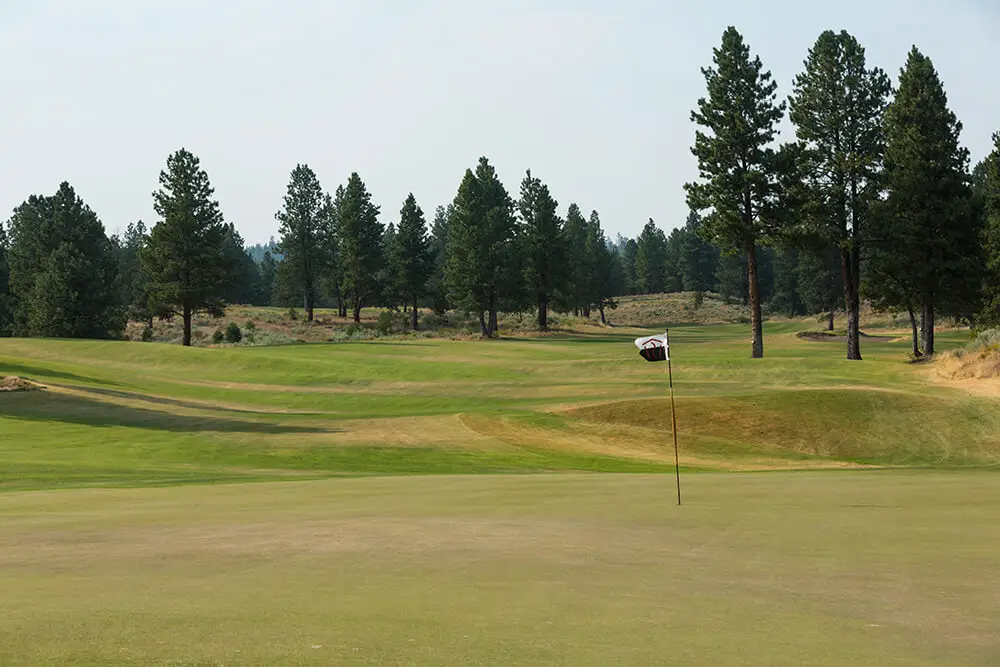
The following hole delivers more of what golfers have come to expect by this point in their round—a generously wide fairway and lots of yardage to cover from tee to green. At 570 yards from the tips, the 14th hole on the Craddock course might not be one that most players can reach in two, but thanks to its width and minimal fairway bunkering, it’s a hole that will allow most players to be just a short flip of the wedge away from a green hit in regulation.
Have you played a golf course with back-to-back par fives?


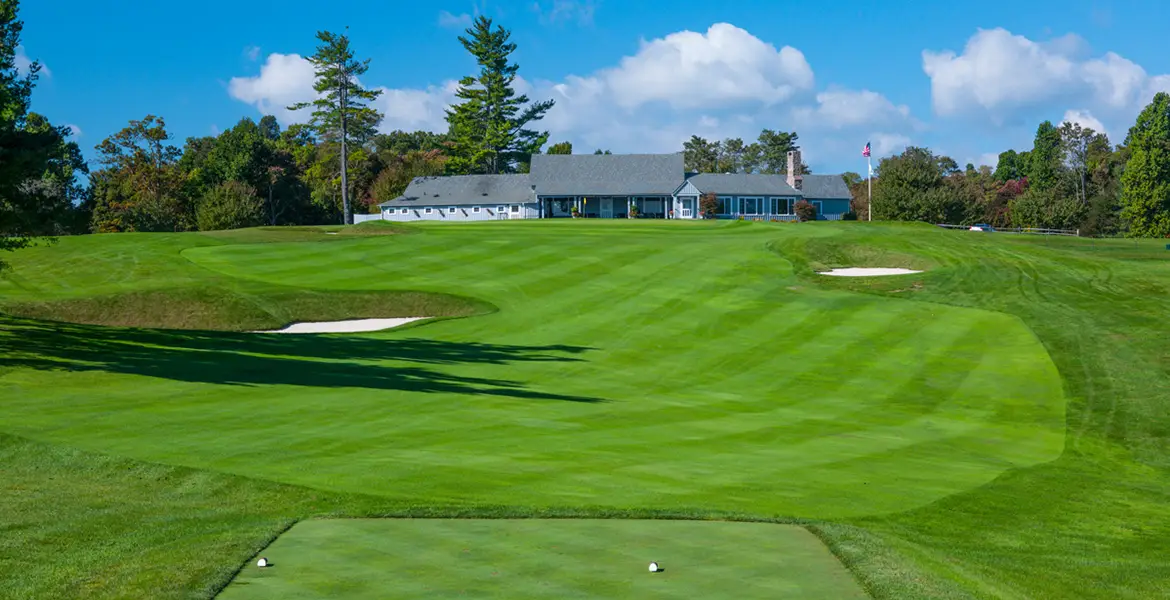
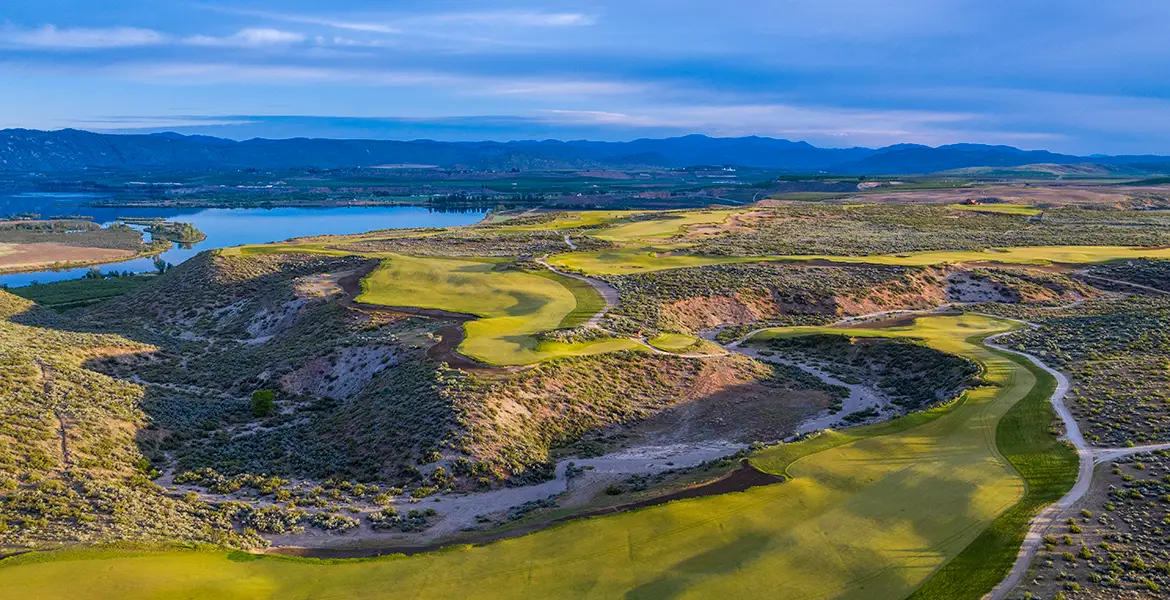



Desert Highlands- 17&18
Golden Eagle, Fifty Lakes, MN – #’s 1 & 2
16th (One of my favorite golf holes in the world) and 17th at the Cascades course at the Homestead Resort in Hot Springs, Virginia. It was designed by William Flynn… fantastic, especially in the spring and fall.
Olympic Club, Lake Course, 16, 17. PGA West Weiskopf course 9,10.
Tequesta CC nos. 6 & 7. Dick Wilson crafted two dogleg holes that at different but complementary.
Lord Byron Nelson’s – Riverhill Country Club 13 & 14 Back to Back Par 5’s 547 yards and 595 yards, with 14 being a dogleg left, uphill to a green that pitches from back to front.
Mt Woodson in Ramona California holes 13,14. One into the wind and then one downwind. Two great par 5s and just an overall very fun course.